[English] 日本語
 Yorodumi
Yorodumi- PDB-8iwh: Structure and characteristics of a photosystem II supercomplex co... -
+ Open data
Open data
- Basic information
Basic information
| Entry | Database: PDB / ID: 8iwh | ||||||||||||||||||||||||||||||
|---|---|---|---|---|---|---|---|---|---|---|---|---|---|---|---|---|---|---|---|---|---|---|---|---|---|---|---|---|---|---|---|
| Title | Structure and characteristics of a photosystem II supercomplex containing monomeric LHCX and dimeric FCPII antennae from the diatom Thalassiosira pseudonana | ||||||||||||||||||||||||||||||
 Components Components |
| ||||||||||||||||||||||||||||||
 Keywords Keywords |  PHOTOSYNTHESIS / PSII supercomplex / LHCX / FCP PHOTOSYNTHESIS / PSII supercomplex / LHCX / FCP | ||||||||||||||||||||||||||||||
| Function / homology |  Function and homology information Function and homology information light-harvesting complex / cytochrome c-heme linkage / light-harvesting complex / cytochrome c-heme linkage /  photosynthesis, light harvesting in photosystem I / photosynthesis, light harvesting in photosystem I /  photosystem II assembly / photosystem II assembly /  photosystem II stabilization / photosystem II stabilization /  photosystem II oxygen evolving complex / photosystem II oxygen evolving complex /  photosystem II / photosystem II /  photosystem II reaction center / photosystem II reaction center /  thylakoid / photosynthetic electron transport chain ... thylakoid / photosynthetic electron transport chain ... light-harvesting complex / cytochrome c-heme linkage / light-harvesting complex / cytochrome c-heme linkage /  photosynthesis, light harvesting in photosystem I / photosynthesis, light harvesting in photosystem I /  photosystem II assembly / photosystem II assembly /  photosystem II stabilization / photosystem II stabilization /  photosystem II oxygen evolving complex / photosystem II oxygen evolving complex /  photosystem II / photosystem II /  photosystem II reaction center / photosystem II reaction center /  thylakoid / photosynthetic electron transport chain / oxidoreductase activity, acting on diphenols and related substances as donors, oxygen as acceptor / response to herbicide / thylakoid / photosynthetic electron transport chain / oxidoreductase activity, acting on diphenols and related substances as donors, oxygen as acceptor / response to herbicide /  photosystem II / photosystem II /  plastid / plastid /  extrinsic component of membrane / photosynthetic electron transport in photosystem II / extrinsic component of membrane / photosynthetic electron transport in photosystem II /  chlorophyll binding / chloroplast thylakoid membrane / chlorophyll binding / chloroplast thylakoid membrane /  photosynthesis, light reaction / electron transporter, transferring electrons within the cyclic electron transport pathway of photosynthesis activity / photosynthesis, light reaction / electron transporter, transferring electrons within the cyclic electron transport pathway of photosynthesis activity /  phosphate ion binding / response to light stimulus / phosphate ion binding / response to light stimulus /  photosynthesis / respiratory electron transport chain / photosynthesis / respiratory electron transport chain /  chloroplast / chloroplast /  electron transfer activity / protein stabilization / iron ion binding / electron transfer activity / protein stabilization / iron ion binding /  heme binding / heme binding /  membrane / membrane /  metal ion binding / metal ion binding /  cytoplasm cytoplasmSimilarity search - Function | ||||||||||||||||||||||||||||||
| Biological species |   Thalassiosira pseudonana (Diatom) Thalassiosira pseudonana (Diatom) | ||||||||||||||||||||||||||||||
| Method |  ELECTRON MICROSCOPY / ELECTRON MICROSCOPY /  single particle reconstruction / single particle reconstruction /  cryo EM / Resolution: 2.68 Å cryo EM / Resolution: 2.68 Å | ||||||||||||||||||||||||||||||
 Authors Authors | Feng, Y. / Li, Z.H. / Wang, W.D. / Shen, J.R. | ||||||||||||||||||||||||||||||
| Funding support |  China, 9items China, 9items
| ||||||||||||||||||||||||||||||
 Citation Citation |  Journal: Sci Adv / Year: 2023 Journal: Sci Adv / Year: 2023Title: Structure of a diatom photosystem II supercomplex containing a member of Lhcx family and dimeric FCPII. Authors: Yue Feng / Zhenhua Li / Xiaoyi Li / Lili Shen / Xueyang Liu / Cuicui Zhou / Jinyang Zhang / Min Sang / Guangye Han / Wenqiang Yang / Tingyun Kuang / Wenda Wang / Jian-Ren Shen /   Abstract: Diatoms rely on fucoxanthin chlorophyll -binding proteins (FCPs) for their great success in oceans, which have a great diversity in their pigment, protein compositions, and subunit organizations. We ...Diatoms rely on fucoxanthin chlorophyll -binding proteins (FCPs) for their great success in oceans, which have a great diversity in their pigment, protein compositions, and subunit organizations. We report a unique structure of photosystem II (PSII)-FCPII supercomplex from at 2.68-Å resolution by cryo-electron microscopy. FCPIIs within this PSII-FCPII supercomplex exist in dimers and monomers, and a homodimer and a heterodimer were found to bind to a PSII core. The FCPII homodimer is formed by Lhcf7 and associates with PSII through an Lhcx family antenna Lhcx6_1, whereas the heterodimer is formed by Lhcf6 and Lhcf11 and connects to the core together with an Lhcf5 monomer through Lhca2 monomer. An extended pigment network consisting of diatoxanthins, diadinoxanthins, fucoxanthins, and chlorophylls is revealed, which functions in efficient light harvesting, energy transfer, and dissipation. These results provide a structural basis for revealing the energy transfer and dissipation mechanisms and also for the structural diversity of FCP antennas in diatoms. | ||||||||||||||||||||||||||||||
| History |
|
- Structure visualization
Structure visualization
| Structure viewer | Molecule:  Molmil Molmil Jmol/JSmol Jmol/JSmol |
|---|
- Downloads & links
Downloads & links
- Download
Download
| PDBx/mmCIF format |  8iwh.cif.gz 8iwh.cif.gz | 1.7 MB | Display |  PDBx/mmCIF format PDBx/mmCIF format |
|---|---|---|---|---|
| PDB format |  pdb8iwh.ent.gz pdb8iwh.ent.gz | 1.4 MB | Display |  PDB format PDB format |
| PDBx/mmJSON format |  8iwh.json.gz 8iwh.json.gz | Tree view |  PDBx/mmJSON format PDBx/mmJSON format | |
| Others |  Other downloads Other downloads |
-Validation report
| Arichive directory |  https://data.pdbj.org/pub/pdb/validation_reports/iw/8iwh https://data.pdbj.org/pub/pdb/validation_reports/iw/8iwh ftp://data.pdbj.org/pub/pdb/validation_reports/iw/8iwh ftp://data.pdbj.org/pub/pdb/validation_reports/iw/8iwh | HTTPS FTP |
|---|
-Related structure data
| Related structure data |  35766MC  8j0dC M: map data used to model this data C: citing same article ( |
|---|---|
| Similar structure data | Similarity search - Function & homology  F&H Search F&H Search |
- Links
Links
- Assembly
Assembly
| Deposited unit | 
|
|---|---|
| 1 |
|
- Components
Components
-Photosystem II ... , 18 types, 36 molecules AaBbCcDdGgHhIiJjKkLlMmnNTtWwXx...
| #1: Protein |  / PSII D1 protein / Photosystem II Q(B) protein / PSII D1 protein / Photosystem II Q(B) proteinMass: 36982.176 Da / Num. of mol.: 2 / Source method: isolated from a natural source / Source: (natural)   Thalassiosira pseudonana (Diatom) / References: UniProt: A0T0W2, Thalassiosira pseudonana (Diatom) / References: UniProt: A0T0W2,  photosystem II photosystem II#2: Protein |  Mass: 56465.262 Da / Num. of mol.: 2 / Source method: isolated from a natural source / Source: (natural)   Thalassiosira pseudonana (Diatom) / References: UniProt: A0T0P5 Thalassiosira pseudonana (Diatom) / References: UniProt: A0T0P5#3: Protein |  / PSII 43 kDa protein / Protein CP-43 / PSII 43 kDa protein / Protein CP-43Mass: 51776.156 Da / Num. of mol.: 2 / Source method: isolated from a natural source / Source: (natural)   Thalassiosira pseudonana (Diatom) / References: UniProt: A0T0T1 Thalassiosira pseudonana (Diatom) / References: UniProt: A0T0T1#4: Protein |  / PSII D2 protein / Photosystem Q(A) protein / PSII D2 protein / Photosystem Q(A) proteinMass: 39089.582 Da / Num. of mol.: 2 / Source method: isolated from a natural source / Source: (natural)   Thalassiosira pseudonana (Diatom) / References: UniProt: A0T0T0, Thalassiosira pseudonana (Diatom) / References: UniProt: A0T0T0,  photosystem II photosystem II#7: Protein |  Mass: 18176.705 Da / Num. of mol.: 2 / Source method: isolated from a natural source / Source: (natural)   Thalassiosira pseudonana (Diatom) / References: UniProt: B8CC14 Thalassiosira pseudonana (Diatom) / References: UniProt: B8CC14#8: Protein |  / PSII-H / PSII-HMass: 7391.801 Da / Num. of mol.: 2 / Source method: isolated from a natural source / Source: (natural)   Thalassiosira pseudonana (Diatom) / References: UniProt: A0T0P8 Thalassiosira pseudonana (Diatom) / References: UniProt: A0T0P8#9: Protein/peptide |  / PSII-I / PSII 4.8 kDa protein / PSII-I / PSII 4.8 kDa proteinMass: 3940.673 Da / Num. of mol.: 2 / Source method: isolated from a natural source / Source: (natural)   Thalassiosira pseudonana (Diatom) / References: UniProt: A0T0U9 Thalassiosira pseudonana (Diatom) / References: UniProt: A0T0U9#10: Protein/peptide |  / PSII-J / PSII-JMass: 4045.768 Da / Num. of mol.: 2 / Source method: isolated from a natural source / Source: (natural)   Thalassiosira pseudonana (Diatom) / References: UniProt: A0T0T9 Thalassiosira pseudonana (Diatom) / References: UniProt: A0T0T9#11: Protein/peptide |  / PSII-K / PSII-KMass: 4983.990 Da / Num. of mol.: 2 / Source method: isolated from a natural source / Source: (natural)   Thalassiosira pseudonana (Diatom) / References: UniProt: A0T0S8 Thalassiosira pseudonana (Diatom) / References: UniProt: A0T0S8#12: Protein/peptide |  / PSII-L / PSII-LMass: 4367.076 Da / Num. of mol.: 2 / Source method: isolated from a natural source / Source: (natural)   Thalassiosira pseudonana (Diatom) / References: UniProt: A0T0U0 Thalassiosira pseudonana (Diatom) / References: UniProt: A0T0U0#13: Protein |  Mass: 12051.050 Da / Num. of mol.: 2 / Source method: isolated from a natural source / Source: (natural)   Thalassiosira pseudonana (Diatom) / References: UniProt: B8BYH2 Thalassiosira pseudonana (Diatom) / References: UniProt: B8BYH2#14: Protein/peptide |  Mass: 2571.161 Da / Num. of mol.: 2 / Source method: isolated from a natural source / Details: Author stated that sequence was not found / Source: (natural)   Thalassiosira pseudonana (Diatom) Thalassiosira pseudonana (Diatom)#16: Protein/peptide |  / PSII-T / PSII-TMass: 3314.011 Da / Num. of mol.: 2 / Source method: isolated from a natural source / Source: (natural)   Thalassiosira pseudonana (Diatom) / References: UniProt: A0T0P6 Thalassiosira pseudonana (Diatom) / References: UniProt: A0T0P6#19: Protein |  Mass: 6096.549 Da / Num. of mol.: 2 / Source method: isolated from a natural source / Source: (natural)   Thalassiosira pseudonana (Diatom) / References: UniProt: B8C8Y3 Thalassiosira pseudonana (Diatom) / References: UniProt: B8C8Y3#20: Protein/peptide |  Mass: 3933.643 Da / Num. of mol.: 2 / Source method: isolated from a natural source / Source: (natural)   Thalassiosira pseudonana (Diatom) / References: UniProt: A0T0N4 Thalassiosira pseudonana (Diatom) / References: UniProt: A0T0N4#21: Protein |  Mass: 6417.546 Da / Num. of mol.: 2 / Source method: isolated from a natural source / Source: (natural)   Thalassiosira pseudonana (Diatom) / References: UniProt: A0T0T3 Thalassiosira pseudonana (Diatom) / References: UniProt: A0T0T3#27: Protein/peptide |  Mass: 3591.463 Da / Num. of mol.: 2 / Source method: isolated from a natural source / Source: (natural)   Thalassiosira pseudonana (Diatom) / References: UniProt: A0T0T2 Thalassiosira pseudonana (Diatom) / References: UniProt: A0T0T2#28: Protein |  Mass: 22439.217 Da / Num. of mol.: 2 / Source method: isolated from a natural source / Source: (natural)   Thalassiosira pseudonana (Diatom) / References: UniProt: B8BSY9 Thalassiosira pseudonana (Diatom) / References: UniProt: B8BSY9 |
|---|
-Cytochrome b559 subunit ... , 2 types, 4 molecules EeFf
| #5: Protein |  / PSII reaction center subunit V / PSII reaction center subunit VMass: 9521.692 Da / Num. of mol.: 2 / Source method: isolated from a natural source / Source: (natural)   Thalassiosira pseudonana (Diatom) / References: UniProt: A0T0U2 Thalassiosira pseudonana (Diatom) / References: UniProt: A0T0U2#6: Protein/peptide |  / PSII reaction center subunit VI / PSII reaction center subunit VIMass: 4913.846 Da / Num. of mol.: 2 / Source method: isolated from a natural source / Source: (natural)   Thalassiosira pseudonana (Diatom) / References: UniProt: A0T0U1 Thalassiosira pseudonana (Diatom) / References: UniProt: A0T0U1 |
|---|
-Protein , 5 types, 8 molecules OoUuVv34
| #15: Protein | Mass: 32168.496 Da / Num. of mol.: 2 / Source method: isolated from a natural source / Source: (natural)   Thalassiosira pseudonana (Diatom) / References: UniProt: B8C4I5 Thalassiosira pseudonana (Diatom) / References: UniProt: B8C4I5#17: Protein | Mass: 15486.596 Da / Num. of mol.: 2 / Source method: isolated from a natural source / Source: (natural)   Thalassiosira pseudonana (Diatom) / References: UniProt: B8BVI4 Thalassiosira pseudonana (Diatom) / References: UniProt: B8BVI4#18: Protein | Mass: 17713.232 Da / Num. of mol.: 2 / Source method: isolated from a natural source / Source: (natural)   Thalassiosira pseudonana (Diatom) / References: UniProt: A0T0N2 Thalassiosira pseudonana (Diatom) / References: UniProt: A0T0N2#22: Protein | | Mass: 24100.990 Da / Num. of mol.: 1 / Source method: isolated from a natural source / Source: (natural)   Thalassiosira pseudonana (Diatom) / References: UniProt: B8BUU4 Thalassiosira pseudonana (Diatom) / References: UniProt: B8BUU4#23: Protein | | Mass: 21058.961 Da / Num. of mol.: 1 / Source method: isolated from a natural source / Source: (natural)   Thalassiosira pseudonana (Diatom) / References: UniProt: B8BVI1 Thalassiosira pseudonana (Diatom) / References: UniProt: B8BVI1 |
|---|
-Fucoxanthin chlorophyll a/c ... , 4 types, 8 molecules 56709281
| #24: Protein | Mass: 20872.670 Da / Num. of mol.: 1 / Source method: isolated from a natural source / Source: (natural)   Thalassiosira pseudonana (Diatom) / References: UniProt: B8BX92 Thalassiosira pseudonana (Diatom) / References: UniProt: B8BX92 | ||
|---|---|---|---|
| #25: Protein | Mass: 21402.484 Da / Num. of mol.: 1 / Source method: isolated from a natural source / Source: (natural)   Thalassiosira pseudonana (Diatom) / References: UniProt: B8CEV5 Thalassiosira pseudonana (Diatom) / References: UniProt: B8CEV5 | ||
| #26: Protein | Mass: 21279.365 Da / Num. of mol.: 2 / Source method: isolated from a natural source / Source: (natural)   Thalassiosira pseudonana (Diatom) / References: UniProt: B5YLU3 Thalassiosira pseudonana (Diatom) / References: UniProt: B5YLU3#29: Protein | Mass: 20786.684 Da / Num. of mol.: 4 / Source method: isolated from a natural source / Source: (natural)   Thalassiosira pseudonana (Diatom) / References: UniProt: B8BX93 Thalassiosira pseudonana (Diatom) / References: UniProt: B8BX93 |
-Sugars , 2 types, 17 molecules 
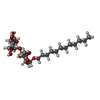

| #38: Sugar | ChemComp-DGD / #43: Sugar | ChemComp-LMU / |
|---|
-Non-polymers , 17 types, 330 molecules 
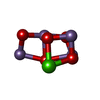



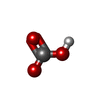




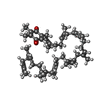

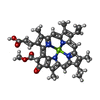
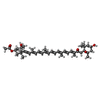



















| #30: Chemical | ChemComp-BCR /  Β-Carotene Β-Carotene#31: Chemical | #32: Chemical |  Chloride Chloride#33: Chemical | ChemComp-CLA /  Chlorophyll a Chlorophyll a#34: Chemical | ChemComp-PHO /  Pheophytin Pheophytin#35: Chemical |  Bicarbonate Bicarbonate#36: Chemical | ChemComp-LHG /  Phosphatidylglycerol Phosphatidylglycerol#37: Chemical | ChemComp-SQD / #39: Chemical | ChemComp-LMG / #40: Chemical | #41: Chemical |  Plastoquinone Plastoquinone#42: Chemical | ChemComp-HEM /  Heme B Heme B#44: Chemical |  Chlorophyll c Chlorophyll c#45: Chemical | ChemComp-A86 / (  Fucoxanthin Fucoxanthin#46: Chemical | ChemComp-DD6 / (  Diadinoxanthin Diadinoxanthin#47: Chemical | ChemComp-KC2 /  Chlorophyll c Chlorophyll c#48: Chemical | |
|---|
 Movie
Movie Controller
Controller



 PDBj
PDBj





























